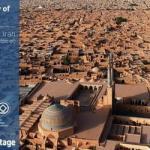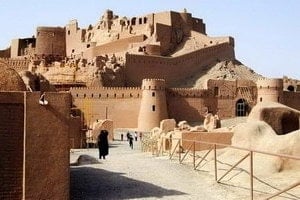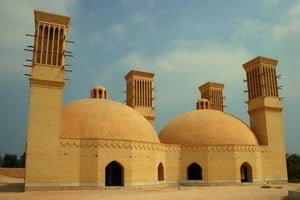UNESCO heritage
Iran accepted the UNESCO World Heritage Convention on February 23, 1975. This is the list of World Heritage Sites in Iran as of 2017: Choqa zanbil, Naqsh-e jahàn Square a Esfahan, Persepolis, Takht-e Soleyman, Pasargadae, Bam and its cultural landscape, Soltaniyeh mausoleum, Bisotun inscriptions, Armenian monastic settlements, Historic Shushtar hydraulic system, Shrine and tomb of Sheikh Safī al-Dīn, Tabriz historical bazaar, Persian garden, Friday Mosque (Masjed -e Jāmé) of Esfahan, Gonbad-e Qābus, Golestan Palace, Shahr-i Sokhta, Maymand Cultural Landscape, Susa, The Persian qanat, Lut Desert, City of Yazd.
World Heritage Sites of Iran
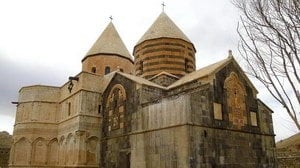
Black Church
Qara Kelisa or The Black Church is the burial place of San Taddeo. Historical sources reveal that in the Sassanid era a part of the Armenians was of Zoroastrian faith, while ... Read more
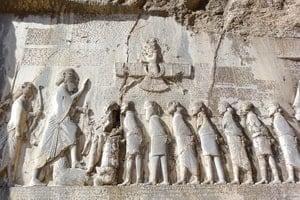
Rock inscription of Bisotun
The rock inscription of Bisotun is located in the homonymous city in the province of Harsin (Kermānshāh region), at the foot of Mount Bisotun. This inscription is the largest in the world and the ... Read more
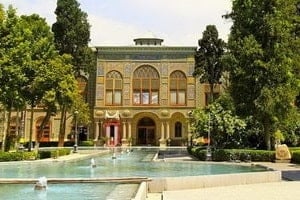
Golestan Palace
Golestan Palace has a monumental entrance and has several halls now used as a museum, such as the hall of mirrors, the hall of diamonds and the ivory room. In the hall of ... Read more
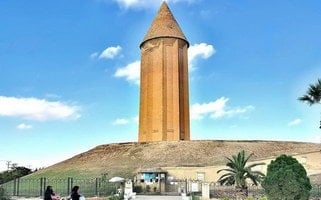
Tower of Gonbad-e Kavus
The Gonbad-e Kavus Tower (Qabus) is one of the tallest brick-built towers in the world, represents one of the most valuable works of Islamic architecture in Iran and is located ... Read more
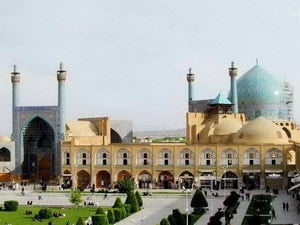
Imam Mosque
The Imam Mosque, the most prestigious historical mosque in Esfahān, among the important buildings of Islamic architecture in Iran and known by other names such as: Mahdie mosque, Al-Mahdi mosque, Jāme 'Abbāsi mosque, ... Read more
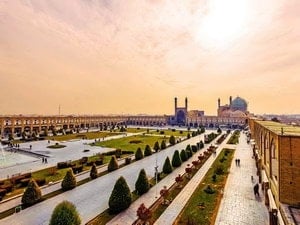
NAGHSH AND JAHAN
The Naghsh-e Jahan square was built in the time of the Timurids, to a lesser extent than today. At the time of Shah Abbas I the square was enlarged and purchased the ... Read more
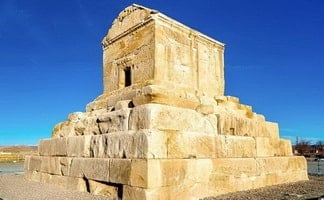
Pasargadae
Along the road that connects Esfahan to Shiraz, in the plain of Morghab, there is the mausoleum of Cyrus the great. The mausoleum building includes a quadrangular room which is located ... Read more
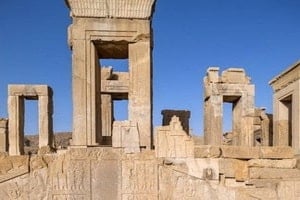
Persepolis (Persepolis, Parse)
Takht-e Jamshid ("Throne of Jamshid"), is the famous name of the most impressive architectural work of the Achaemenids located in the city of Marvdasht, Fārs region. The Takht-e Jamshid area which in ... Read more
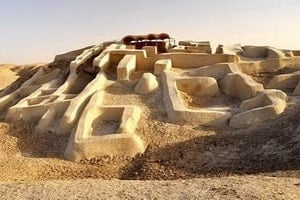
Shahr-i Sokhta
Shahr-e Sukhte (Shahr-i Sokhta) is located 57 km west of the road from Zabol to Zahedan. Because of the vastness and the particular conditions ... Read more
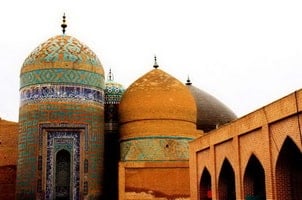
Sheikh Safi-ad-din mausoleum
Mausoleum of Sheikh Safi-ad-din Ardabili is composed of a series of buildings from different periods and for the first time it was for the will of Shah Tahmasp Safavide who took on ... Read more
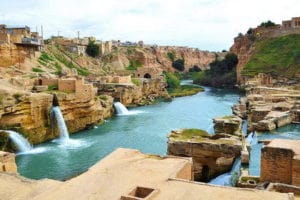
Shushtar hydraulic system
The hydraulic system of Shushtar is located in the city of the same name (Khuzestān region) and dates back to the Achaemenid and Sassanid periods. These ancient structures considered the most important architectural and ... Read more

Soltaniyeh dome
the archaeological area of Soltaniyeh is located at the forty-third kilometer of the Zanjan-Khoda Bande road. Soltaniye Dome is forty-eight and a half meters high, belongs to the Il-Khanide era and was built in nine ... Read more
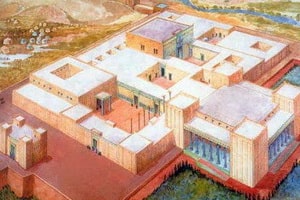
Apadana Palace of Susa
The Apadana Palace of Susa is located in the city of the same name (Khuzestān region) and was the winter palace of the Achaemenid kings and the main one of Darius I who by his will was ... Read more
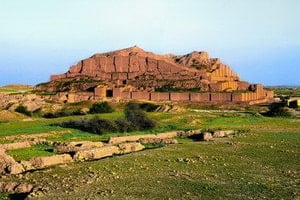
Choqa zanbil
Choqa zanbil (Choga Zanbil) or Ziggurat Dur Untāsh is located in the city of Shush or Susa (Khuzestān region). This ancient place of worship was built by the great king of ancient ... Read more
Bāgh, Iranian garden
Although, according to some Iranian myths, the first to collect and cultivate in a bāgh (garden) the seeds of flowers and fruit imported from mountain areas was ... Read more
Intangible Cultural Heritage

Radif; of Persian Music
Inserted in 2009 in the UNESCO list of Intangible Cultural Heritage of Humanity The Radif of Iranian music is the traditional repertoire of Iranian classical music which constitutes the essence of culture ... Read more
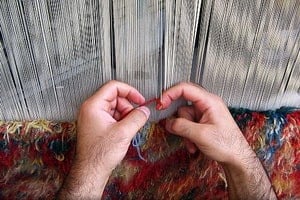
The traditional art of carpet weaving in the Kashan Province
Inserted in 2010 in the UNESCO list of Intangible Cultural Heritage of Humanity in the fine carpet weaving industry, Kashan has almost one in three of its residents employed in the manufacture ... Read more

The traditional art of carpet weaving in the Province of Fars
Inserted in 2010 in the UNESCO list of Intangible Cultural Heritage of Humanity The Iranians enjoy a global reputation in carpet weaving and carpet weavers from Fars, ... Read more
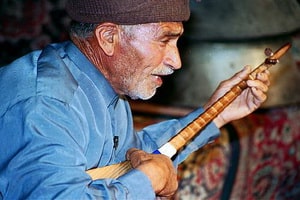
Music by the Bakhshi of the Khorasan Province
Inserted in 2010 in the UNESCO list of Intangible Cultural Heritage of Humanity In the province of Khorasan, the Bakhshi are famous for their musical ability with the dotār, a lute ... Read more
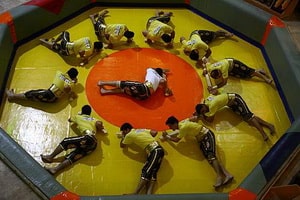
Pahlevani and zoorkhaneh rituals
Inserted in 2010 in the UNESCO list of Intangible Cultural Heritage of Humanity Pahlevani is an Iranian martial art that brings together the various elements of Islam, Gnosticism and ancient Persian beliefs ... Read more
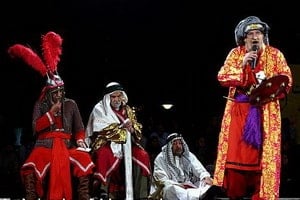
The Ritual Dramatic Art of Ta'zīye
Inserted in 2010 in the UNESCO list of Intangible Cultural Heritage of Humanity. Ta'zīye (or Ta'azyeh) is a dramatic ritual art that tells religious events, historical and mythical stories and folk tales ... Read more
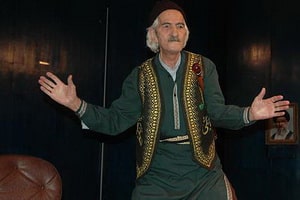
Naqqāli, Iranian dramatic narrative
Inserted in 2011 in the UNESCO list of Intangible Cultural Heritage of Humanity Naqqāli is the oldest form of drama in the Islamic Republic of Iran and historically plays a role ... Read more

The ancient traditional construction of the Iranian boat Lenj in the Persian Gulf
Inserted in 2011 in the UNESCO list of Intangible Cultural Heritage of Humanity The Iranian Lenj boats are traditionally built by hand and are used by the inhabitants of the northern coast of ... Read more
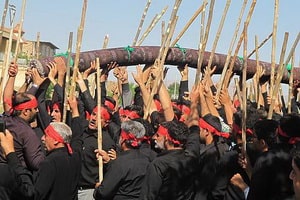
Qālišuyān rituals of Mashad-e Ardehāl in Kashan
Inserted in 2012 in the UNESCO list of Intangible Cultural Heritage of Humanity Qālišuyān rituals are practiced in Iran to honor the memory of Soltān Ali, a sacred figure ... Read more

The Culture of Preparation and sharing of Lavash, Katyrma, Jupka and Yufka bread
Inserted in 2011 in the UNESCO list of Intangible Cultural Heritage of Humanity The culture of preparing and sharing bread in the communities of Azerbaijan, Iran, Kazakhstan, Kyrgyzstan and Turkey has ... Read more
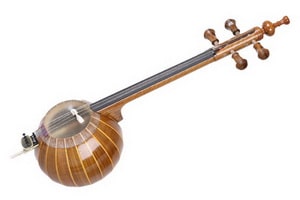
Art of working and playing with Kamantcheh / kamancha, a bowed musical instrument.
Inserted in 2017 in the UNESCO list of Intangible Cultural Heritage of Humanity The Kamantcheh / Kamancha (small bow), a stringed string instrument, has existed for over 1.000 years. In ... Read more

Chogān; the team game of horse riding accompanied by music and narration
Inserted in 2017 in the UNESCO list of Intangible Cultural Heritage of Humanity Chogān is a traditional team game that has a history of over 2000 years in Iran and ... Read more
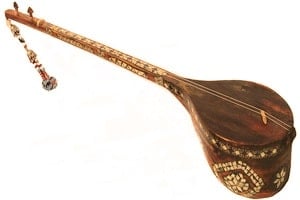
Traditional methods of processing and playing the Dotar
Inserted in 2019 in the UNESCO list of Intangible Cultural Heritage of Humanity Traditional methods of processing and playing the Dotar define one of the most important social and cultural components of the ... Read more
- Armenian Monastic Ensembles of Iran (2008)
- Bam and its Cultural Landscape (2004)
- Bisotun (2006)
- Cultural Landscape of Maymand (2015)
- Golestan Palace (2013)
- Gonbad-e Qābus (2012)
- Historic City of Yazd (2017)
- Masjed-e Jāmé of Isfahan (2012)
- Meidan Emam, Esfahan (1979)
- Pasargadae (2004)
- Persepolis (1979)
- Shahr-i Sokhta (2014)
- Sheikh Safi al-din Khānegāh and Shrine Ensemble in Ardabil (2010)
- Shushtar Historical Hydraulic System (2009)
- Soltaniyeh (2005)
- Susa (2015)
- Tabriz Historic Bazaar Complex (2010)
- Takht-e Soleyman (2003)
- Tchogha Zanbil (1979)
- The Persian Garden (2011)
- The Persian Qanat (2016)
To share

